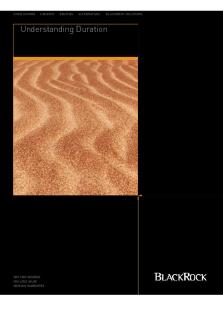Understanding understated and overstated PDF

| Title | Understanding understated and overstated |
|---|---|
| Course | Introduction to Financial Accounting |
| Institution | University of Calgary |
| Pages | 2 |
| File Size | 90.6 KB |
| File Type | |
| Total Downloads | 111 |
| Total Views | 148 |
Summary
idk...
Description
Understanding understated and overstated Friday, October 2, 2020
4:38 PM
ASSETS = LIABILITIES + SHAREHOLDERS' EQUITY
❖ If the accounts effected are on the same side of the equation they should have the opposite effect, i.e., if one is overstated the other one would be understated. ❖ Similarly, if the accounts on either side of the equation they will flow in the same direction, i.e., if one is understated so will the other. ❖ There are exceptions to this rule and we will see that soon.
Let me demonstrate that for you. For all entries (i) record the adjusting entries, (ii) If the entry was not recorded would it be understated (U) or overstated (O). 1. Bought equipment on a/c for $10,000 on April 1st. Paid $5,000 by Dec 31st. What is the adjusting entry (i) Adjusting Entry: DR. A/P $5,000 CR. Cash $5,000
A/P 10,000 (April 1st) (Dec 31) 5,000
(ii) If the entry was not recorded A/P = Liability = O Cash = Asset = O
5,000 (End balance)
ASSETS = LIABILITIES + SHAREHOLDERS' EQUITY O= + O (Same direction) +5,000 = +5,000 (Balances) 2. Competed job that we received payment in advance for $75,000. The job was completed on Dec 30th. (i) Adjusting Entry: DR. Unearned Revenue $75,000 CR. Revenue
$75,000
(ii) If they were not recorded: Unearned Revenue = Liability = O Revenue = SE (Retained Earnings) = U ASSETS = LIABILITIES + SHAREHOLDERS' EQUITY = O + U (Opposite direction) = +75,000 - 75,000 (Balances)
Exceptions to that rule ❖ There are only two exceptions to that rule ○ Expenses ○ Dividends Declared ❖ Let's understand why:
ASSETS = LIABILITIES + SHAREHOLDERS' EQUITY ASSETS = LIABILITIES + COMMON SHARES + RETAINED EARNINGS
ASSETS(dr) = LIABILITIES(cr) + COMMON SHARES(cr) + RE (cr)(Revenues (cr)- Expenses(dr) - Dividends(dr)) Notice here that the expenses and dividends are the only negative values in there and that is the reason they are the exception to that rule. Think of the normal balances of these accounts: When you have the opposite normal balance (i.e. one normal debit and one normal credit) then, the move in the same direction, i.e. both will be understated or overstated. [Go back to the previous to entries and you will notice the same pattern] To summarize:
- If both accounts have the same normal balance then one will be overstated and the other will be understated - If one account is normal debit and the other is normal credit then they will both either be understated or overstated Let's look at an example
For all entries (i) record the adjusting entries, (ii) If the entry was not recorded would it be understated (U) or overstated (O). 1. Utilized prepaid rent expense of $4000 (i) Adjusting Entry: DR. Rent Expense $4,000 CR. Prepaid rent $4,000
(ii) If the entry was not recorded Rent Expense = SE (Retained Earnings) = U Prepaid Rent = Asset = O ASSETS = LIABILITIES + SHAREHOLDERS' EQUITY O = + C.S. + R.E. (Revenues - Expenses (U) - Dividends) +4,000 = + R.E. (R - (-4,000) - D) [the two negatives make it a positive] +4,000 = + R.E. (R + 4,000 - D) (Balances) • For this only focus on expenses Notice: they are on different sides of the equation but move in opposite direction....
Similar Free PDFs

Understanding packs and bundles
- 5 Pages

Understanding Bits and Bytes
- 2 Pages

Understanding Hazards and Risk
- 45 Pages

hudson understanding equity and trusts
- 241 Pages

Understanding Chernobyl
- 2 Pages

Understanding Poetry
- 4 Pages

Understanding business
- 11 Pages

Understanding duration
- 4 Pages
Popular Institutions
- Tinajero National High School - Annex
- Politeknik Caltex Riau
- Yokohama City University
- SGT University
- University of Al-Qadisiyah
- Divine Word College of Vigan
- Techniek College Rotterdam
- Universidade de Santiago
- Universiti Teknologi MARA Cawangan Johor Kampus Pasir Gudang
- Poltekkes Kemenkes Yogyakarta
- Baguio City National High School
- Colegio san marcos
- preparatoria uno
- Centro de Bachillerato Tecnológico Industrial y de Servicios No. 107
- Dalian Maritime University
- Quang Trung Secondary School
- Colegio Tecnológico en Informática
- Corporación Regional de Educación Superior
- Grupo CEDVA
- Dar Al Uloom University
- Centro de Estudios Preuniversitarios de la Universidad Nacional de Ingeniería
- 上智大学
- Aakash International School, Nuna Majara
- San Felipe Neri Catholic School
- Kang Chiao International School - New Taipei City
- Misamis Occidental National High School
- Institución Educativa Escuela Normal Juan Ladrilleros
- Kolehiyo ng Pantukan
- Batanes State College
- Instituto Continental
- Sekolah Menengah Kejuruan Kesehatan Kaltara (Tarakan)
- Colegio de La Inmaculada Concepcion - Cebu







